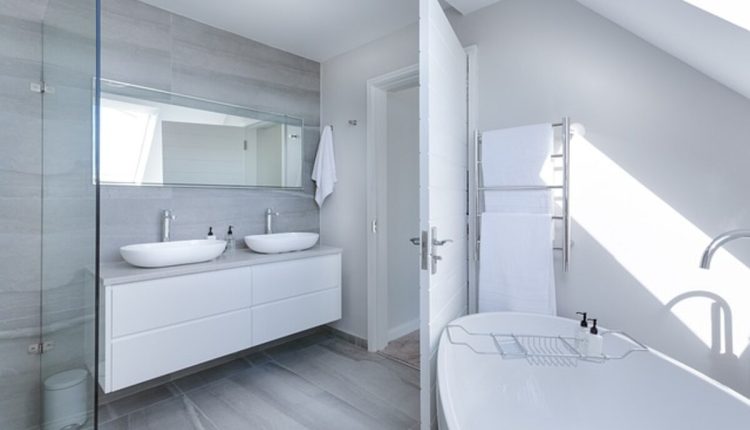When making decisions for your commercial property, bathroom stall doors may seem like the obvious choice. Have the Best information about vách ngăn compact.
However, they do come with both advantages and disadvantages.
Privada provides various options to make restroom partitions more appealing and functional, such as narrowing the gap between door and stall pilasters with continuous hinges.
Material
Stall doors must be constructed of durable material to withstand heavy use. Loose or wobbly surfaces pose a potential safety hazard to restroom occupants while germs spread more freely; replacing old, worn-out doors with new ones can help remedy these issues and create a hygienic restroom environment for all users.
Toilet partitions are made of many materials, with powder-coated steel being one of the more commonly utilized choices. Plastic laminate, solid plastic, and phenolic core are also popular materials to consider for their unique benefits, each ideal for specific applications.
For instance, stainless steel is an excellent material to choose for high-traffic areas and can withstand vandalism impacts with ease. Furthermore, its robust construction stands up well against abrasions, mildew growth, and cleaning agents and can even be textured for extra resistance against damage and an improved visual aesthetic.
Powder-coated steel doors are another popular option. They use galvanized steel with a powder coating baked in an oven for a hard, run-free finish. This budget-friendly option resists wear, impact, graffiti, and scratches; additionally, it can be combined with continuous hinges to minimize striping along its hinge side and create a seamless appearance. This also helps increase privacy within stalls while restricting unauthorized access.
Style
Your choice of bathroom stall doors matters for multiple reasons, including hygiene, safety, and code compliance. For instance, it may be desirable to avoid gaps that allow people queueing up to use the restroom to peek inside stalls; you can achieve this using Special-Lite doors equipped with Elite hardware that reduce visibility gaps between the stall door and partition panel to virtually zero, helping stop germ spread and provide privacy to patrons.
Louvered doors add an attractive decorative element to any restroom and can complement the design of other stalls, shower rooms, or changing areas in your facility. Louvered doors also block outside visibility at eye level, so it is difficult for passers-by to observe someone using your facilities. This creates an additional sense of privacy for users while helping them focus on business or personal care tasks more efficiently.
As another option, consider installing phenolic bathroom stall doors, which are durable and strong in high-traffic areas. They can withstand impact from vandalism and physical abuse, making them an excellent addition to your facility’s design scheme. In addition, their attractive appearance blends well with any decor, and their moisture resistance makes cleaning them simple. You could also coat them with graffiti-proof surface sealant to increase protection.
Maintenance
Bathroom partition doors are essential in maintaining privacy and safety in public restrooms, but they also need proper care in order to continue functioning optimally. One effective method for doing so is creating a regular cleaning and disinfecting routine – this prevents dirt, grime, or other potentially corrosive substances from gathering on either the surface of the door or hinges and helps eliminate germs that may cause illness in customers of restrooms.
First, gather your cleaning tools. These should include non-abrasive cleaners designed specifically for your door’s material, a spray bottle of water-based disinfectant, and microfiber cloths or soft brushes for application. Clear the area surrounding your stall door of any obstacles to reduce scratching while cleaning, apply disinfectant according to its label instructions for adequate coverage and timeframe, then apply microfiber cloths or soft brushes before beginning this step.
Once the disinfectant has had enough time to set in, use a soft, clean cloth to wipe down the door and its hinges with the disinfectant solution until all visible contaminants have been eliminated and the area has been thoroughly cleaned.
Safety
Bathroom stall doors are an integral component of security for restroom patrons and should protect them against breaches of privacy and accidental intrusions. Partitions should be designed to minimize gaps and avoid sightlines, and installing locks with clear occupancy indicators deters vandalism or accidental intrusions. Regular checks and maintenance help identify any issues and keep users feeling comfortable in public spaces.
When stall doors swing outward, people outside can easily see inside, which can be embarrassing and awkward for those inside. On the contrary, doors that open inward make it nearly impossible for anyone to peek in without physically opening the door; furthermore, this design makes it harder to barricade it and trap occupants inside.
Stall partitions can be designed to eliminate the gap between the door and side panel to increase privacy, which is especially useful in busy public bathrooms such as school restrooms.
Maintaining bathroom stall doors properly reduces the risk of damage and keeps them functioning smoothly for years to come. To ensure that your partition hardware is always ready to go, invest in high-quality silicone—or Teflon-based lubricant that reduces friction while protecting from corrosion and prevents dust or grime buildup that could hamper performance over time.










